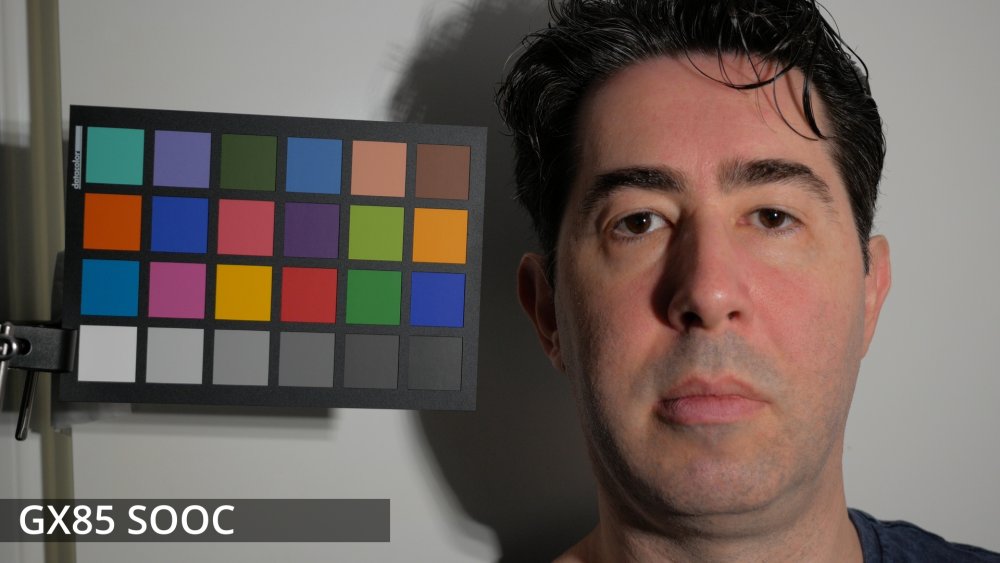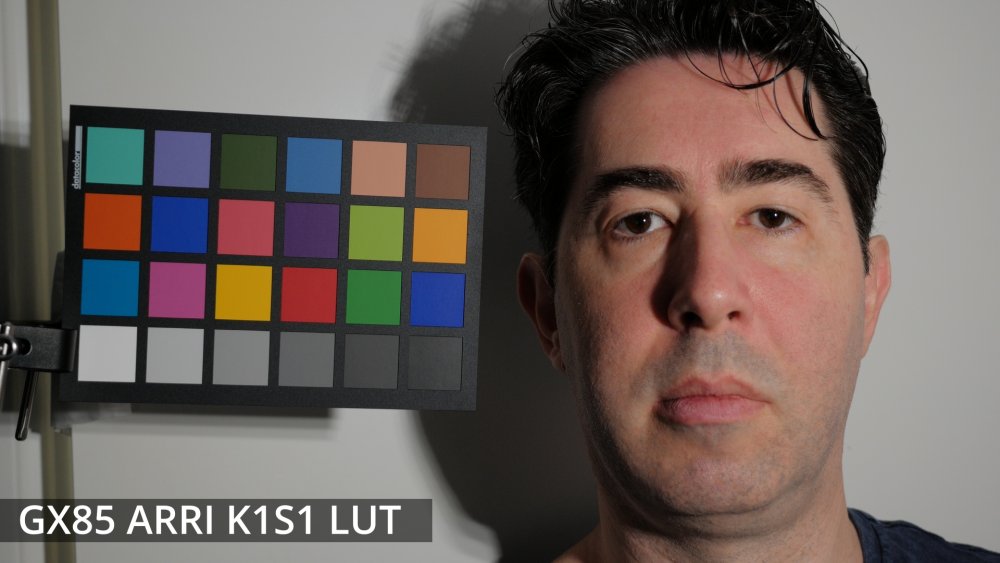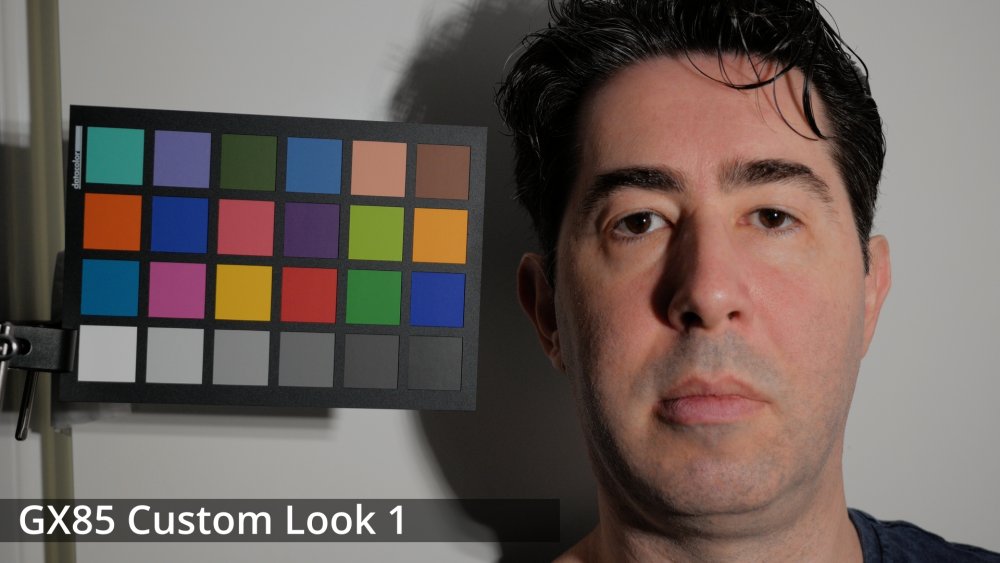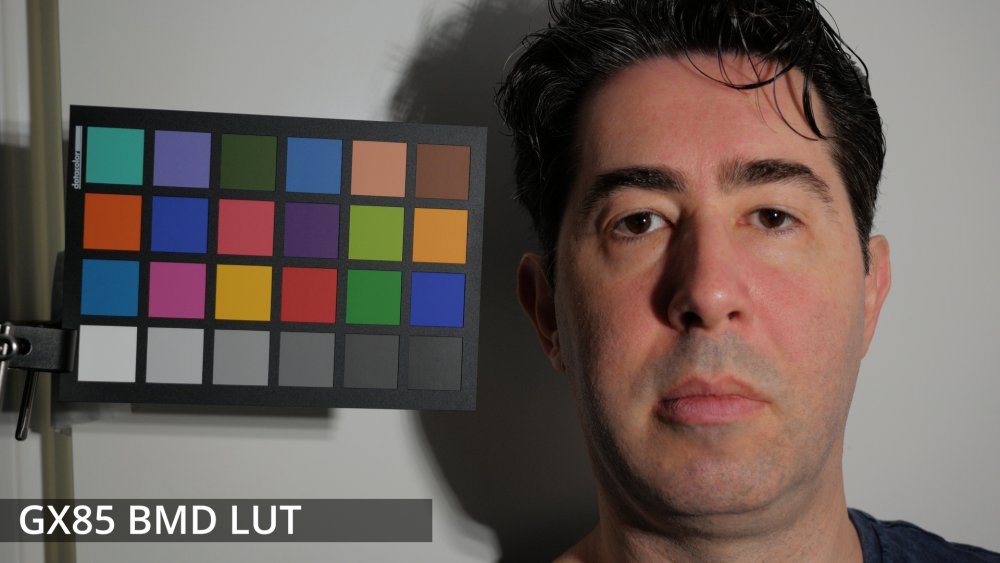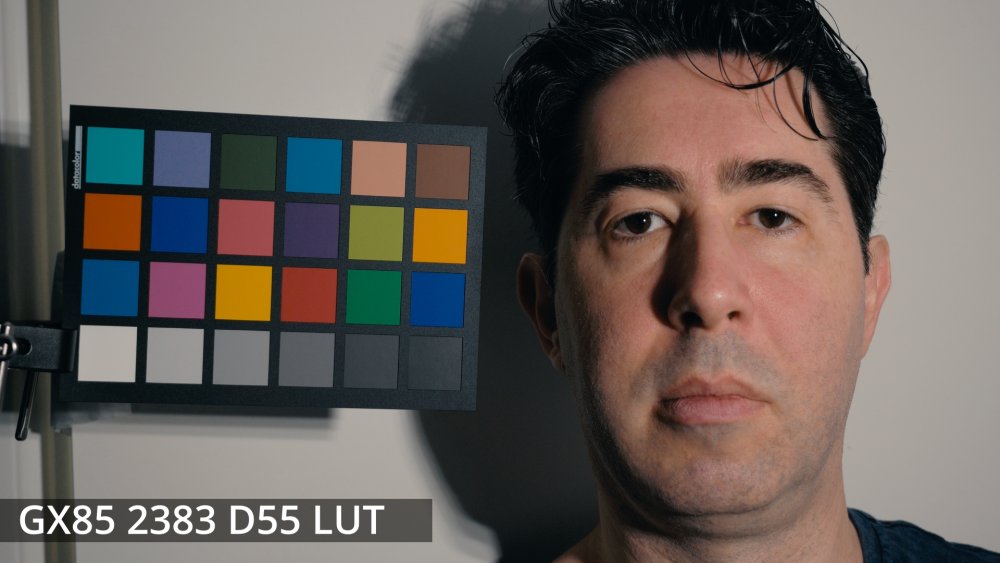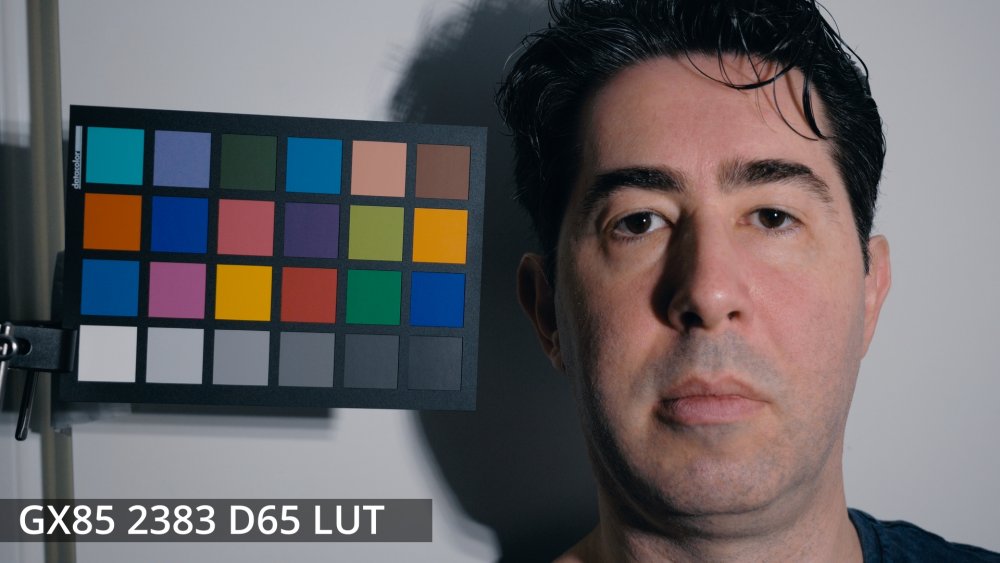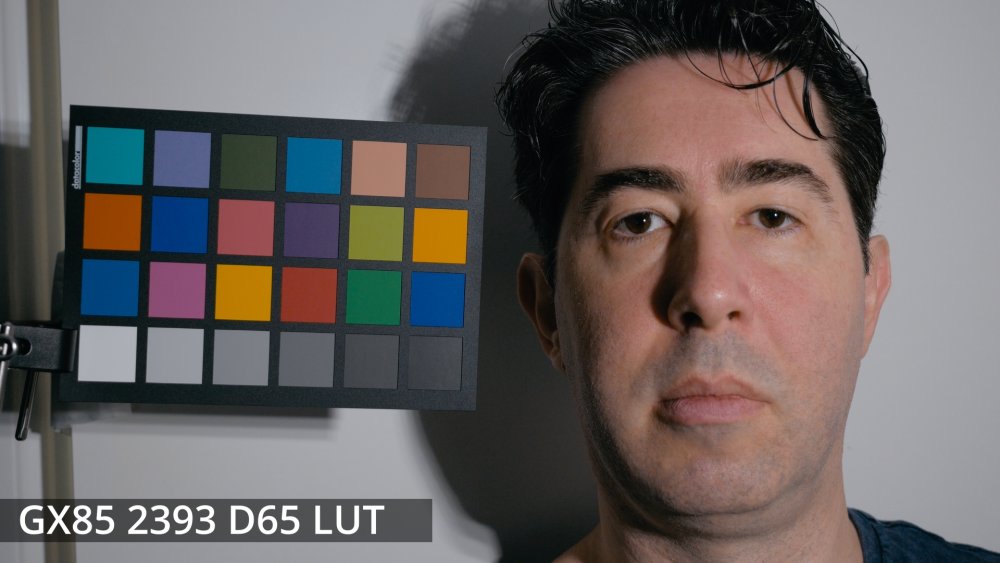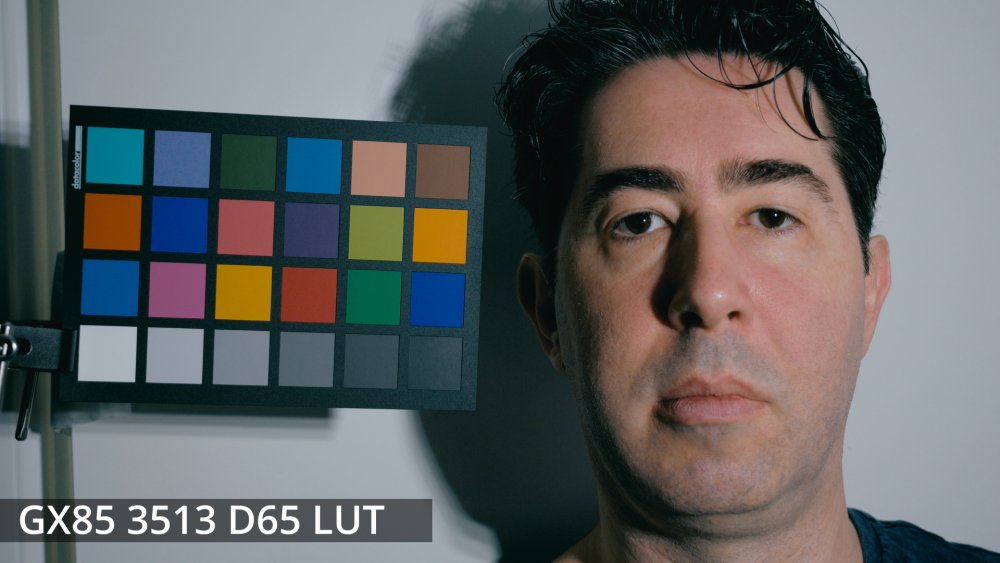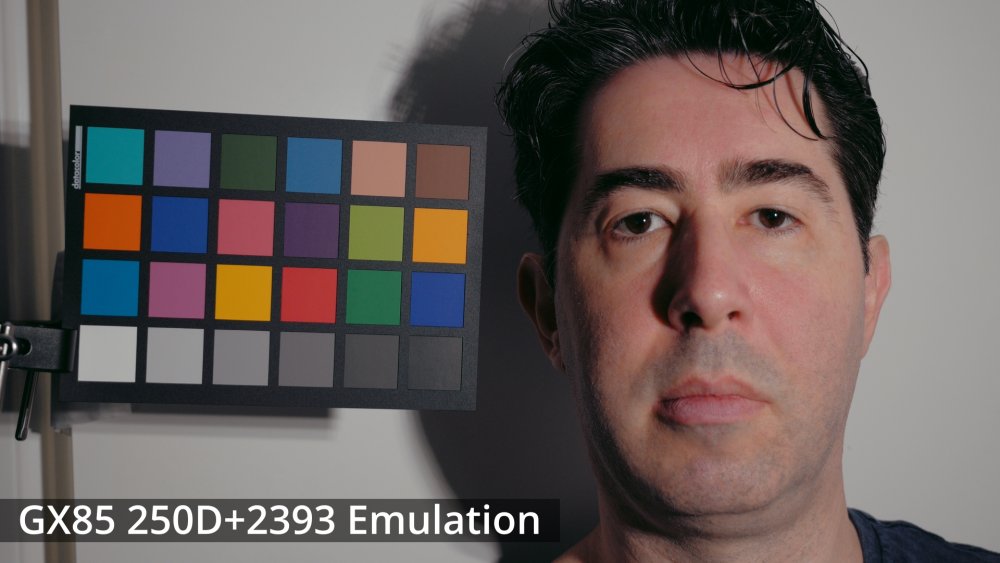-
Posts
7,831 -
Joined
-
Last visited
Content Type
Profiles
Forums
Articles
Everything posted by kye
-
Absolutely. Another consideration for some is availability. When I was hanging around reduser.com it became pretty apparent that a common thing was to own a RED (obviously!) and also a set of vintage primes, but to rent modern lenses. The rationale was that often these cinematographers were doing personal projects and having the vintage primes made it so that they had a set on hand for whenever the personal project was able to be scheduled. Quite a few were filming one (or more!) documentaries too, and are essentially on-call so that if something suddenly happens they can grab the camera and go. It was common for these guys to store the camera in a go-bag, often rigged up and sitting next to the front door. Good luck shooting that if you got the call and then had to rent equipment in the middle of the night!! Film-making varies much more person-to-person than most people expect, and logistical factors or aesthetic preferences can easily flip a decision between two different people and their circumstances.
-
Brady Bessette WanderingDP Crimson Engine Jeven Dovey D4Darious Andyax Lewis Potts Clever Ghost Chili Beyond the game Singularity Film Neal Howland Jimmy on Film Scott Jeschke
-
Maybe the forum has been taken over by AI and it's become sentient and agreed with your comments so much it wanted everyone to read them several times!!
-
I watched this video recently about synthesisers and recording equipment magazines (which operate incredibly similarly to cameras) and yeah, print magazines almost make YouTube reviewers look honest by comparison. TLDR: he analysed a magazine from 2002 and out of 188 pages, 79 were full page ads (he didn't even bother to count half-page ads either, so the ad coverage was way higher) all reviews were positive except for the odd little minor comment, and none of the sub-category scores in any review were even below 2.5/5 (except one product which got 1.5/5 for a subcategory, but that was because it had too many ads!!)
-
LOL, yeah, or self-importance or narcissistic or megalomanianism etc 😂😂😂 I guess in that case they don't have a clear idea of the industry they're in, likely because they're thinking about themselves rather than their audience. Entertainment is very broad and is sort-of a catch-all for the other categories, but I think it's still useful as it firmly defines that the purpose is to engage and entertain. I think that because YT was new and people didn't really understand what it was or how it fit into the world people weren't clear that it still fit the definitions that had been previously established, but (as usual) the pros had figured it out already and there (almost never) isn't anything new under the sun.
-

Panasonic S5 II (What does Panasonic have up their sleeve?)
kye replied to newfoundmass's topic in Cameras
Lok just posted a video talking about the S5ii and talks about the new e-stabilisation feature, and it looks like it has completely eliminated the IBIS wobble on wide lenses? He includes examples with him walking with a wide lens, so it looks like a legit test: -
With all the discussions recently about YouTubers I've been thinking about this as I watch YT videos and I remembered this comment and wanted to come back to it. I think that perhaps one of the things that would help a YouTuber achieve success on the platform is having a clear idea of what business they are really in. For example, and off the top of my head, YouTubers likely fall into one of the following: Advertising (as has been discussed) Entertainment Education Journalism These are pretty broad, but I would suggest that each has a clear definition and purpose, with clear principles on how it is done, how to make money, and what is to be expected from a good (and dodgy) channel. I'm guessing that if you don't really know which category a YouTuber is in, then perhaps they're drifting into dodgy territory. Did I miss any?
-
@Parker is right that having too much isn't a problem because you can just turn the lights down or put on more ND etc, but in order to not end up buying $20,000 worth of lights unnecessarily, maybe just do some tests with your own light? Work out what the largest amount of light would be that you would need on a regular basis (you can always rent for the 5% of times that are an exception) and then test your own 150W one and just crank up the ISO to see how many stops brighter a light you would need for that situation. It's work, but in film-making you pay for everything one way or the other.. with money or with time or with experience etc.
-
The majority of YT that I watch has nothing to do with cameras, and in general the people that have the most followers have the least fancy camera equipment. I mean, there are probably more channels that have over 500K subscribers and are just shot with a smartphone than all the active camera YT channels combined.
-
Well said. It's also worth pointing out that while manufacturers will do whatever they can to sell you an item again and again, it's hard to get people to buy a $3,000 tripod every year or two, or $4,000 worth of lenses every year or two, etc, but the camera body is one thing they can convince people to buy and re-buy over and over again. I also think there's an element of "hangover" where old ideas live on even after they no longer make sense. In the days of standard definition, wanting more resolution in the image was a sensible request, but since getting 1080p / 4K it is no longer a sensible response. No-one looks at a high-quality uncompressed 1080p / 4K image and thinks "the thing that is limiting my ability as a film-maker to express myself is the lack of detail in the image".... but the idea that "more resolution is more better" lives on, endlessly pushed by people with vested interests in selling you something you already own.
-
I really don't envy you pros who have to go into who-knows-what situations and have to deliver professional results! Do you at least know what colour the acoustic tiles are? Heaven forbid that you go in there and they're all purple or green or something horrific..
-
I haven't been following him for very long so haven't seen a change, but I can tell you that I'd much prefer to hear the thoughts of someone as qualified and experienced as he is versus the gaggle / hoarde / confusion / seething-mass of "film-making" YouTubers that only know how to shoot a product review YT video! One thing I find in severe scarcity is people that have worked in professional settings and know how the real pros do things, that also know what it's like to make videos from idea to upload by themselves, and can also communicate it in a way that is clear and concise and doesn't have some sort of off-putting trait (like being an arrogant asshat and talking to the audience like they're morons - yes I am thinking of someone specifically). I also like the fact he's selling courses. The alternatives are that they do YT for a while but get no return and stop doing it, or they go full shill, or they somehow keep the channel going but you have no idea where their revenue or equipment to run it come from and so trust and credibility just erode over time. I wish more people from the industry would create a YT channel where they share their knowledge for free as advertising for their own courses. Imagine if Deakins etc had a YT channel where they did a 5-minute piece to camera per week!
-
Saying "even the a6700 can look good" is sort-of like saying "even the cheapest Ferrari can go fast".. the a6700 is a very modern camera and high-spec camera. I can understand why you would say something like this though - you've been watching too much "camera YT" and have fallen prey to the two biggest hidden problems: Older cameras are invisible on YT, despite being the majority of what is used People that talk about cameras, or even mention them in the video or description so they're searchable, are using the most recent cameras, or relatively recent cameras. The reason for this is simple - if you shot a video with the Sony a4000 then you're obviously not into the "tech" so it's not something you're thinking about , and putting that in the description isn't going to benefit you because no-one is searching for a4000 anymore. However, the people making videos about anything else other than cameras might be using the a4000, the a3000 or their phone from 5 years ago. I recently discovered a woodworking / renovation channel I like shoots with a C100, which records 24Mbps 1080p but his YT uploads are in 4K and the image is basically flawless. It's over a decade old and you can get entire setups with lenses batteries etc for $500 or so if you snag a deal. The camera body is the most discussed film-making item, but is the least important Go watch almost any video that talks about camera equipment in a balanced way and they'll tell you that the camera body is less important than the lenses or tripods etc. Watch and video about film-making equipment in a balanced way and they'll tell you that the camera rig is less important than lighting or cinematography etc. Watch and video about technical film-making in a balanced way and they'll tell you that equipment is less important than location choice, production design, hair & makeup, etc.. Watch and video about creative film-making in a balanced way and they'll tell you that the technical stuff is important to get right, but is far less important than writing, casting, acting and directing, etc. So... the camera body is the least important item in the least important sub-category of the least important sub-category of film-making.
-
@fuzzynormal I couldn't agree more! Disclaimer: I'm also an old. I have moved from shooting GH5 and manual F0.95 primes to GX85 and variable aperture zoom as my default setup, despite owning complete setups for GH5, OG BMPCC, OG BMMCC, XC10, and Canon 700D with ML, etc. I much prefer the GX85 to the GH5, but for some reason I cannot fathom, I am drawn to the GF3 whenever I get close to my equipment. I also edit in 1080p (but upres this to 4K for upload to YT). I prefer to downsample in-camera if it's not a significant quality bottleneck. I focus my time and energy on colour grading, editing, sound design and composition, as is evidenced by my many threads on these subjects.
-
I saw that one in my feed but haven't watched it yet. I highly recommend watching the YT film-makers that actually do real work. They have a balanced perspective and speak from experience. Like Luc Forsyth, who has shot major network TV shows: Finding good people on YT is quite challenging now, because they tend to just use their own names and the good people aren't talking about brands etc all the time so finding them can be a challenge.
-
Yeah, I assume that too. I've always been conscious of this too. The only potentially impartial reviews are when the person buys it anonymously like any member of the public would, gets it the same time it ships to everyone else, then they put it through their paces. The other issue with "reviews" that aren't long-term reviews is that the person hasn't had the product for long enough to really test it. People like Gerald might know what shortcomings to look for and actively go looking for them, but no-one can test reliability in less than a week. I find the same issues with product reviews on Amazon etc - they are essentially first-impression reviews.
-
If you're fighting the sun then yeah, serious horsepower definitely comes into the equation!
-
In my casual YT DOP channel viewing I rarely see anyone with anything larger than a 600W, even for blasting through windows to simulate daylight. I guess a lot of people have access to cameras that have good ISO performance above base and also shoot with fast lenses too, and aren't trying to light Hollywood-sized sets, so maybe 600W is enough? Mostly the discussion seems to be about placement and modifiers, not the overall power levels. But, this is just what I've seen, maybe the algorithm is hiding things from me 🙂
-
That all makes sense, and like most things, it might be a while before all the tech is handled correctly so it just works and you don't need to troubleshoot the process at each stage. I think that 180 VR video is likely to be a winning format. In 360 video people don't really know where to look, and some of the experiments I've seen with it were really hit and miss if there was a narrative arc that you were meant to be experiencing. Also, all these discussions were had when surround sound first came out and people didn't know what to do with it. People were genuinely talking about mixing live concerts in such a way that put the listener in the middle of the band on the stage, or floating above the band looking down on them like you were in a box seat, only it was a live outdoor concert and there was no seating, etc. Eventually people settled down and realised that for the most part people don't really want those things, but they do want a "if I had been there" sort of experience. So surround audio is mixed like you've got a great seat in the concert, and if there's picture too then the audio is mostly oriented around the point-of-view of that. So, if it's a choice between supplying 180 video and a stereo mix, or 360 video and full ambisonic mix, just to be able to look behind you at nothing of any significance whatsoever, I think many will opt for the first one! Having a wider spread seems sensible - if someone else hasn't done a bunch of tests then it would be relatively easy to do once you have the equipment.
-
After posting the previous post I went back and compared the looks a few times and realised I was a bit harsh on the ARRI LUT, considering that it was very flattering on my battered skin tone but basically didn't screw up the strong colours too much, whereas the film look is much stronger without being that much more flattering. Inspired by the ARRI LUT, I created this custom grade from scratch. SOOC (for reference): New Custom Look: ARRI LUT (for reference): I'm actually really happy with that look - I went a bit further in evening out the skin tones and brightening them up a bit and it didn't seem to come at the expense of anything else. I think I could easily build a look around this, and will experiment further.
-
I'm still lost down this rabbit hole, but these are an interesting reference. This is what happens if you put the GX85 through a "look". I put the GX85 test image through a bunch of output LUTs to see which (if any) I liked the flavour of. In order to compare them equally, I adjusted after the LUT to match the black and white points, exposure, and contrast. This way we're not just comparing the different contrast curves, but the other aspects of the LUTs like colour rendering etc. The node structure was this: slightly lower gain to bring GX85 image into range (it records super-whites) CST from 709/2.4 to Davinci Intermediate (my preferred working colour space) (my grade would go here, but for this test no adjustments were made) CST to whatever colour space the LUT expects The LUT (these all convert to 709/2.4) A curve to adjust the overall levels from the LUT to roughly approximate the GX85 image The round-trip from 709/2.4 to DWG to 709/2.4 is almost transparent, if you compensate for the gamut and saturation compression in the conversion at the end, so I didn't bother to grab it. Results: The famous ARRI K1S1 LUT (the ARRI factory LUT): One of the 5000 BMD LUTs that come with Resolve, which I tried just for fun: The Kodak 2383 PFE (Print Film Emulation) LUT. The D55 one seemed the closest match to the WB of the image for some reason, but everyone always uses the D65 ones, so I've included both here for comparison. The D65 one: The Kodak 2393 PFE. It doesn't come with Resolve but it's free online from a bunch of places. I like it because it doesn't tint the shadows as blue, so the image isn't as muddy / drab. The FujiFilm 3513 PFE: I find the ARRI LUT a bit weak - it helps but not as much as I'd like. The comparison above is flattering to the LUT because it has a bit more contrast compared to the SOOC so looks a bit better. The skintones are a little more flattering on it though, which might be enough if you want a more neutral look. All the PFE looks are very strong, and aren't really meant to be used on their own. The film manufacturers designed the colour science to look good when used with a negative film like Kodak 250D or 500T stocks, so it's "wrong" to use it unless you're grading a film scan, I think people use it like this anyway 🙂 Some time ago I purchased a power-grade that emulated both the 250D and 2393 PFE from Juan Melara, which looks like this: To me it looks much more normal than just the 2393 PFE on its own, but it's definitely a stronger look. The powergrade is split into nodes that emulate the 250D separately to the 2393, and the 2393 nodes are almost indistinguishable from the LUT, so I'd imagine this is probably a good emulation. Anyway, lots of flexibility in these 8-bit files!
-
I'd agree with you, except that about half the movies in the box office aren't much better.. add in all the religious propaganda movies that thrive in more religious areas of the world and sadly, I think there's a huge market 😞
-
One question that stood out to me immediately was how much you want the audio to move around when the person in the VR turns their head. For example, if you record stereo and the VR person turns their head the visuals will all move but the audio won't change at all - I would imagine that to be unnerving and potentially ruin the immersion wouldn't it? Does VR have a standard where you can record to that and then the headset will decode it to match where the viewer looks?
-
Maybe Canon are thinking that they'll keep their exclusivity on the super-sharp super-expensive lenses, but let the third-parties develop lower cost less technically perfect lenses? It would make sense and make the system a lot more accessible and attract a lot of new customers that wouldn't want to spend top dollar on pristine lenses. Their success on the EF line and how ubiquitous it was must have been a critical factor in their earnings over the decades, so making RF a new default standard is very much in their interests. You might be right about the split between FF and APS-C lenses though - that's still a strategy in a similar direction.




